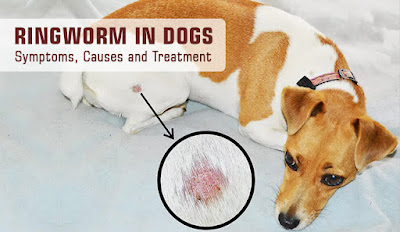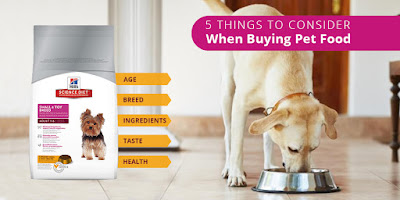We all have heard the phrase ‘You are what you eat’. It is an indisputable fact that to live a healthy and happy life we need to eat good food. Every single cell in our body, including from the skin and hair to the muscles, bones and all the systems, is built on the nutrients from the diet that we consume. Our bodies are continually repairing, healing, and recreating themselves, even if we don’t realize it. Similarly, the health of dogs, cats or any other pets depends on the foods we give them to eat.
Some people in Australia believe that raw food is better than commercial processed food because key nutrients are reduced in processed food after going through the cooking process. Additionally, processed foods contain colorants, preservatives which may cause adverse reactions such as food allergies in your pet. Obesity is a big problem in modern dogs, and some dog owners find it hard to control their dog’s weight when feeding commercial food. So, if you are induced to feed your pet a raw diet, it is necessary to approach this decision wisely considering that your pet entirely depends on you for its nutritional requirements.
WHAT IS RAW FOOD?
The general idea of raw food is providing your animal a diet similar to what their wild ancestors ate. Raw foods can be divided into two categories: Homemade raw diets and commercial raw diets that include,
- Raw muscle meat
- Bones, either whole or ground
- Raw eggs
- Organ meats, such as liver and kidneys
- Vegetables and fruits.
BENEFITS:
If you have decided to feed your pet with raw food diets, it may help you achieve many benefits such as,
- Improved immunity and overall health
- Healthier skin and coat
- Fresher breath and cleaner teeth
- Better digestion and smaller poops with lesser odor
- No consumption of excess grains and artificial preservatives.
DRAWBACKS:
Raw pet food does not present several issues as compared to the processed food. However, there are certain difficulties that you want to consider before taking the decision,
- Substantial cost and time
- Imbalance of dietary nutrients
- Widely spread bacteria that can cause illness
- Risk of an injury caused by consuming bones, including broken teeth
PREPARING RAW FOOD FOR YOUR PET:
Raw pet food is available commercially as well that comes in the form of frozen logs, and it must be defrosted before giving to your pet. You can also feed your pet dog home-made raw food created from scratch. Here are some key considerations to keep in mind, regardless of which method you use.
Obtaining High-Quality Ingredients
The variety and grade of components used in raw frozen food preparations varies, and the ingredient list provided on the product label can give you limited information. You can contact the manufacturer if you want to understand more about the composition. Raw diets can also be made at home using ingredients from the grocery store or farmers market. The real advantage of preparing raw food for your pet at home is you can chose quality and quantity of the ingredients.
Maintain the Right Balance
There are several illnesses caused in cats and dogs due to the nutritional deficiencies. Both home-made and commercial raw foods sometimes fail to maintain the right balance and miss the vital nutrients your pet needs. For example, parts of chicken we feed to our pet may not include vitamins, fibre and minerals that our pet badly requires. Therefore, your pet’s diet needs to be cautiously balanced that should offer a proper nourishment to your pet. Food that offers a great deal of varieties is considered to be the best as it offers more trace vitamins and minerals to your pet.
Bones or No Bones
Consumption of bones provides extra calcium and phosphorous if included in your dog’s raw food diet. It also prevents tartar buildup and maintains your dog’s dental health. On the other hand, the inclusion of bones in your pet’s diet presents a great risk too. Bones can cause the obstruction of the esophagus. Your dog may suffer from constipation because of too many bone fragments in the bowel.
Prevent Bacterial Toxicity
Bacteria including Salmonella and E. coli often contaminate raw meat and raw meat-based foods, causing illness. Commercially produced raw food diets carry a danger of infection as their processing plants have a significant risk of contamination. It is worth knowing that freezing the meat can lower the present quantity of bacteria but cannot eliminate them completely.
Consider Food Safety
To avoid the possibility of contamination, pet owners should always obtain all the ingredients from a safe and reliable source when preparing the home-made raw food for their pets. This will ensure the safety of the diet you wish to feed your animal and help you achieve their optimum health.
HYGIENE AND HANDLING OF RAW FOOD:
Maintaining a good hygiene is even more crucial when handling raw food of your beloved animal companion. Here is what you can do to maintain the safety and hygiene of the food:
- Check the condition of the product package and look whether there are any visible signs of damage.
- Clean your hands with water and soap or any other disinfectant after getting in contact with your pet or their food and packaging.
- Wash all the surfaces and utensils which have been in contact with the pet’s food promptly after the use.
- Discard the left-over food as soon as your pet has finished having it.
- Clean and sterilize your pet’s feeding area right after he/she finishes it.
DISCUSS WITH THE INDUSTRY EXPERT: Nutritional requirement differs with every pet and their relative breed. It is necessary to make sure that the diet you are going to feed your pet is sufficiently balanced as per their requirement. Therefore, before coming to a conclusion on whether you should provide your pet with a raw food diet, talk to your veterinary nutritionist. Discuss the risks and benefits of feeding your pet raw food. Once your vet approves your decision, ask about the suitable recipe you need to follow to maintain the nutritional balance for your beloved companion.

















